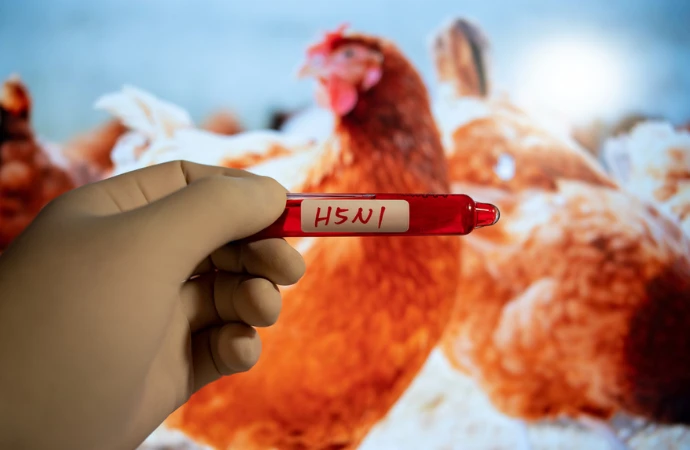Amidst the potential pandemic threat, the United States and Europe are taking proactive measures to acquire or manufacture H5N1 bird flu vaccines. This strategic move not only aims to safeguard at-risk populations but also promises to mitigate the looming threat of a widespread outbreak.
Global Collaboration in Strengthening Defenses Against H5N1 Bird Flu
U.S. officials recently announced the transfer of bulk vaccine from CSL Seqirus, a step that could yield approximately 4.8 million vaccine doses closely matching the current virus strain. Similarly, European health officials are engaged in discussions to procure CSL's pre-pandemic vaccine, underlining the concerted effort to bolster preparedness. Canada, too, is actively exploring avenues with GSK to secure and produce a prepandemic bird flu vaccine. Such initiatives signal a global recognition of the urgency to fortify defences against the rapidly evolving viral strain.
Heightened Concerns Amidst the Emergence of a New Strain of Bird Flu
The urgency is underscored by the emergence of a new strain of bird flu in late 2020, causing unprecedented mortality rates among wild birds and domestic poultry while also infiltrating various mammal species. Notably, the virus's recent incursion into dairy cattle in the U.S., resulting in multiple outbreaks across states, has heightened concerns. The ramifications of human exposure to the virus in agricultural and dairy settings are profound, amplifying the risk of viral mutation and human-to-human transmission. Experts emphasise the imperative of preemptive action to avert such scenarios, stressing that widespread human infections could precipitate dire consequences.
Strategising Vaccination Initiatives
To this end, discussions are underway regarding the strategic deployment of vaccines to safeguard frontline workers and individuals in close proximity to infected animals. Dr. Angela Rasmussen's consultations with U.S. and Canadian officials highlight the collaborative efforts to devise targeted vaccination strategies. The envisaged deployment of vaccines to dairy farmers, healthcare workers, and other vulnerable cohorts holds the promise of containing the spread of the virus. However, the decision hinges on meticulous evaluation, factoring in transmission dynamics, disease severity, and viral mutations.
Europe's Proactive Approach to Pandemic Prevention
Europe's proactive stance, exemplified by the European Commission's pursuit of a joint procurement of CSL Seqirus's vaccine, underscores the collective resolve to forestall a potential pandemic. Such initiatives exemplify a proactive approach aimed at preempting the dire consequences of an unbridled outbreak. The significance of global cooperation in combating infectious diseases cannot be overstated. As governments and healthcare stakeholders rally to confront the evolving threat, collaboration and information-sharing remain paramount.
The concerted efforts of the United States and Europe to acquire and deploy H5N1 bird flu vaccines signify a proactive stance in the face of a looming pandemic threat. By prioritising preparedness and collaboration, stakeholders endeavour to mitigate the risks posed by the virulent viral strain, thereby safeguarding public health on a global scale.
Source Credit: REUTERS
Image Credit: iStock






